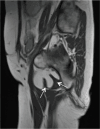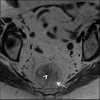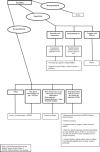The management of deep-seated, lowgrade lipomatous lesions
- PMID: 29303371
- PMCID: PMC12187169
- DOI: 10.1259/bjr.20170725
The management of deep-seated, lowgrade lipomatous lesions
Abstract
Deep-seated, low-grade lipomatous lesions detected on imaging often cause uncertainty for diagnosis and treatment. Confidently distinguishing lipomas from well-differentiated liposarcomas is often not possible on imaging. The approach to management of such lesions varies widely between institutions. Applying an evidenced-based approach set around published literature that clearly highlights how criteria such as lesion size, location, age and imaging features can be used to predict the risk of well-differentiated liposarcomas and subsequent de-differentiation would seem sensible. Our aim is to review the literature and produce a unified, evidence-based guideline that will be a useful tool for managing these lesions.
Figures








References
-
- Fletcher CDM, Bridge JA, Hogendoorn P, Mertens F. WHO classification of tumours. In: International Agency for Research on Cancer (IARC) WHO classification of tumours. Volume ; 2013. pp. 19–46.
-
- Kempson RR, Fletcher CD, Evans HL, Hendrickson RM, Sibley R. Malignant lipomatous tumors. In: Atlas of tumor pathology: tumor of the soft tissue: The British Institute of Radiology.; 2001. pp. 217–38.
Publication types
MeSH terms
Substances
LinkOut - more resources
Full Text Sources
Other Literature Sources

